1.4.0 Release
Scribus 1.4.0 Released
After almost 4 years of intensive work, the Scribus Team (www.scribus.net) has released the new stable version 1.4.0 of the Open Source desktop publishing program Scribus. Given this is the first major stable release in some time, this document outlines improvements over the last number of versions, rather than since just the last one. The idea is to form a general comparison between this and the last stable release.
In summary, more than 2000 feature requests and bugs have been resolved since the development of this new version started.
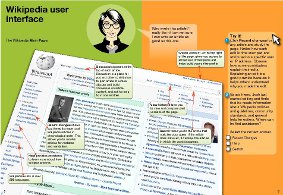
|
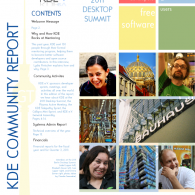
|
Major changes and improvements in comparison to the last stable version 1.3.3.14 are:
- 1.4.0 is based on the Qt4 application framework. The initial transition from Qt3 was performed quite quickly, but fine tuning for cross-platform compatibility and taking advantage of new features took quite some time. As a result, Scribus now runs equally reliable on all supported platforms.
- Thanks to the port to Qt4, the Scribus Team now also provides install files for Mac OS X 10.5 or later (DMG or pkg format), as well as a native version for OS/2 Warp 4 and eComStation. Additionally, thanks to feedback from users of other UNIX platforms, Scribus is will build and run on more of those platforms as well.
- Feature enhancements to object handling (e.g. transform tools like in advanced drawing programs), with improvements to existing features like the Scrapbook and the Image Manager.
- Many advanced options for text and typography, like character styles, optical margins, or glyph extension. Undo/Redo is finally available for almost all text-related actions, and a new script enables replacing straight quotes with typographical quotation marks based on language settings. Usability improvements include better cursor placement and movement, faster layout on canvas and interaction between linked frames.
- New features for vector objects, like Boolean path operations, vector effects or a line style editor.
- Major improvements to the handling of fills, like pattern fill, more gradient types, support for external color palette formats (AI, EPS, GPL, PostScript, SOC), and many new color palettes, including those from commercial vendors like Resene and dtp studio, as well as national/government standards.
- A new frame type called "Render Frame" allows for rendering (and subsequently export) the output of every program that can create PostScript, PDF or PNG files via the command line (e.g. LaTeX, Lilypond, POV-Ray) inside Scribus. The initial version of which was developed as a project for Google Summer of Code and this project has developed to allow import of externally produced documents, scientific publications and formulas. More renderers can be added with a simple configuration file.
- Vector import filters: Scribus 1.4.0 provides new import filters for the following file formats: Adobe Illustrator (both EPS and PDF-based), Macintosh Picture (PICT), Windows Metafile (WMF), Xfig (FIG), Calamus Vector Graphics (CVG), Kivio Stencils (SML), and DIA Shapes (SHAPE).
- Regarding bitmap images, the handling of Photoshop files has seen many major improvements, like support of multiple clipping paths or PSD layers. The Image Manager has been rewritten, and new non-destructive image effects have been added. Moreover, Scribus 1.4.0 now supports EXIF data in images, and import of Windows and OS/2 bitmaps (BMP) has been re-enabled.
- Among the major enhancements to Scribus's pre-press features, printing marks and the display of ink coverage in the Print Preview are the most important. In addition, Scribus now enables conversion of spot colors to process colors during PDF and PostScript export with a single click.
- PDF export has seen major improvements as well. Scribus can now export to PDF 1.5, including PDF layers. Another new feature is the option to embed EPS and PDF files in exported PDFs as an alternative to rasterizing them. Also, both font embedding and substitution have been improved.
- For color management, Scribus 1.4.0 now supports both littleCMS version 1 and 2. It's also possible to enable color management with a single click from the main window.
- Additionally, the Scribus Team has added a feature to emulate color blindness on screen.
- Hundreds of minor and major usability improvements have been added.
- The included scripts have been updated, including the addition of the "Autoquote" script in the Script menu to convert straight quotes in a text frame to correct quotation marks for many languages.
- Scribus 1.4.0 is being shipped with many more templates than previous versions.
- The content of the Help System has been rewritten and updated.
 |
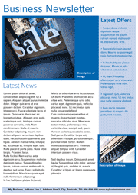 |
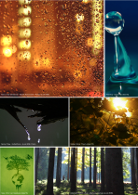
|
Now that Scribus 1.4.0 has been released, the Scribus Team will focus on stabilizing the 1.5 development branch, which will comprise amazing new features like support for PDF/X-1a, PDF/X-4 and PDF/E, Mesh Gradients, native PDF import, XAR import, a completely rewritten table implementation, a rewritten text system, and much more. The 1.4.x version is now in stable/maintenance mode, which means few features will be backported from the 1.5 development branch. In general, only bugs will be fixed in subsequent 1.4.x versions, along with new content, like new translations, new templates, or additional color palettes.
Important Information
If you are working with a team, try to make sure that all team members use the same Scribus version – this will avoid many headaches and extra work. Users should be warned that 1.3.3.x cannot open 1.4.0 files.
The Scribus Team recommends that all distributions package Scribus 1.4.0 as "Scribus" (and replace the outdated Scribus 1.3.3.14).
The 1.4.x branch will now be developed in the Version14x branch of our Subversion repository, leaving the Version135 one behind. This also fixes the version numbering issues of the past, with just two main versions, 1.4.x and 1.5.x
The Scribus Team will continue to implement new features and improvements in the development branch 1.5.x.
We recommend the additional packaging of 1.5 only if it is marked as a development version and can be installed alongside an existing Scribus 1.4.0 (for example as scribus-ng).
The English online help has been mostly updated to match the new features. Translations have temporarily disabled, since they need to be synchronised with the English version once the update is complete. Further updates will be included with subsequent 1.4 releases.
Primary Download Location
- Installation packages and the source code are available here: [1]
- Upstream Debian/Ubuntu repo: [2]
- Fedora RPMS: [3]
- OpenSUSE, Mandriva and SLED RPMs: [4]
- All download options are listed at [5]
Download Verification
| Description | File Name | Sha1sum |
|---|---|---|
| Source | scribus-1.4.0.tar.bz2 | d19e455f261c4075076f1d6f4a55fbd934a66c60 |
| Source | scribus-1.4.0.tar.xz | 0e3afb98a56084c2938a8402df2d89214c42b809 |
| OS X Leopard or higher (DMG) | scribus-1.4.0.dmg | eae5adacdc207f4bda6136dc48c26b83dcbf6b9a |
| OS X Leopard or higher (PKG) | scribus-1.4.0.pkg | 64df9a61b33183dbc85b9a3090a648c75f320640 |
| Windows 32/64 Bit | scribus-1.4.0-windows.exe | 268b9e8658528677ceac6252dae348c49643d159 |
| OS/2 / eComStation | scribus-1.4.0-os2ecs.zip | 4fe0b3cf562cda4e1b78bf89a2340bb868610014 |
Credits
The Scribus Team would like to thank Anduin.net and Modirum for their continued hosting of all of the Scribus websites.
We are also grateful to the Organisation Internationale de la Francophonie and Linux New Media (Germany) for sponsoring.
As of July 2011, the Scribus Team is also pleased to welcome Resene Colours (New Zealand) and dtp studio Oldenburg (Germany) as Special Supporters and donors of colour palettes which are part of the 1.4.0 release.
Finally, the Scribus Team would like to thank the many end users, translators, testers and contributors who helped us with this important release.
 |
 |
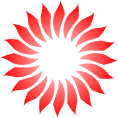 |
 |
 |
About Scribus
Scribus is an Open Source program for professional page layout with press-ready output to PDF files. Underneath a modern and user-friendly interface, Scribus supports professional publishing features, such as color separations, CMYK and Spot Color support, ICC color management, and versatile PDF creation.